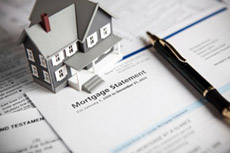Conventional Mortgage as a Low-Risk Financing Option
A conventional mortgage is a loan offered to borrowers who can make a down payment of at least 20 percent. Generally, such loans meet the criteria established by Fannie Mae and Freddie Mac.
Advantages of Conventional Loans
Borrowers benefit from a lower interest rate compared to other loans, and the reason is that banks take less risk when the down payment is at least 20 percent. Again, because of the amount of the down payment, borrowers make lower monthly payments, which are more affordable. The alternative is to buy a mortgage insurance policy, which increases the cost of borrowing. As an added advantage, borrowers have a greater equity in their house, which reduces the risk of foreclosure. Financial institutions also offer flexible payment options and are more willing to negotiate and waive different fees. Finally, banks offer larger loan amounts to borrowers who are able to make a large down payment. They feature fixed interest rates, which is a good choice for people who have fixed, stable income. Many people prefer to make payments that don’t change with interest rate fluctuations. This makes budgeting easier. In some cases, financial institutions offer loans with a variable interest rate.
Downsides of Conventional Mortgages

People with a seasonal or fluctuating income may benefit from a variable-rate loan. The initial interest rate is often lower than that on a fixed-rate loan, which can save borrowers a lot of money. Another downside of conventional loans is that financial institutions require a hefty down payment. This means that people on a tight budget may not qualify. Moreover, borrowers with a poor credit score are often offered a high interest rate. Lenders are also free to determine the origination fees. The closing costs include application, survey, and appraisal fees, as well as recording fees, taxes, title service costs, home warranties, and other expenses. All these increase the cost of borrowing.
Lender’s Requirements
In addition to a hefty down payment, applicants should have a credit score of at least 620 to qualify. Some financial institutions accept credit scores of 580 and higher. As a rule, an excellent score translates into an attractive interest rate. The applicant’s payment history and debt-to-income ratio are also taken into account. Financial institutions obtain the borrower’s report to assess his willingness and ability to pay off debt. Borrowers with late and missed payments, delinquencies, judgments, consumer proposals, and bankruptcies are unlikely candidates. Payments that are late for 30 days or more disqualify applicants for a conventional loan. Financial institutions look at the payments made during the last 12 months. The borrower’s debt-to-income ratio is another important factor. A high debt-to-income ratio shows to banks that the applicant is a risky borrower. This means that he has multiple credit cards and loan balances. Borrowers with a ratio of over 30 percent are unlikely to have their application approved.
Other Considerations
The loan limit varies depending on the type of property. The limit for a single-family home is $417,000. Then, the limit can increase for areas in which property prices are higher.
For condominiums, financial institutions require a down payment of at least 20 percent because mortgage insurance is usually not available. Note that mortgages which don’t meet these criteria are called non-conforming or jumbo loans.
Other Types of Mortgages
Financial institutions offer a large selection of loans, including variable-rate, fixed-rate, endowment, interest-only, and others. Some loans such as interest-only mortgages are riskier than others.
Related Articles
Adjustable Rate Mortgages with Teaser Periods, below Market Rates, and Other Perks
Adjustable rate mortgages are also referred to as floating and variable and offer multiple benefits, including lower monthly payments, teaser periods, and others. Financial institutions also feature lifetime and annual caps to protect consumers. Interest RatesA major benefit of adjustable rate...
First Mortgage as a Form of Senior Debt
The first mortgage is a loan that has priority over other claims or liens while other secured loans are considered subordinate. Other liens are called junior claims. The first mortgage has priority except for statutory liabilities such as taxes. Other than that, it has the same features as other...
Co-borrowers, Lending Criteria, and Options Available
A co-borrower is a person whose credit rating and income level are used to qualify for financing. Both the borrower and co-borrower sign the agreement and have an obligation to make monthly payments. When two people apply for a mortgage, their names will be present on the property’s title. ...
Benefits, Drawbacks, and Terms of Fixed-Rate Mortgages
A fixed-rate mortgage is a type of loan that comes with a fixed instead of floating interest rate. The rate of interest remains fixed over the term of the loan. The period can vary from 10 to 35 and even 50 years. Payments go toward interest charges first and then toward the principal amount....
Refinancing to Lower the Interest Rate and Monthly Payments
Refinancing occurs when a company or an individual borrower replaces an old debt with a loan with better interest rate and terms. Alternatively, the borrower negotiates a new repayment schedule with the financial institution. Refinancing with a new lender makes sense if the interest rates keep...
